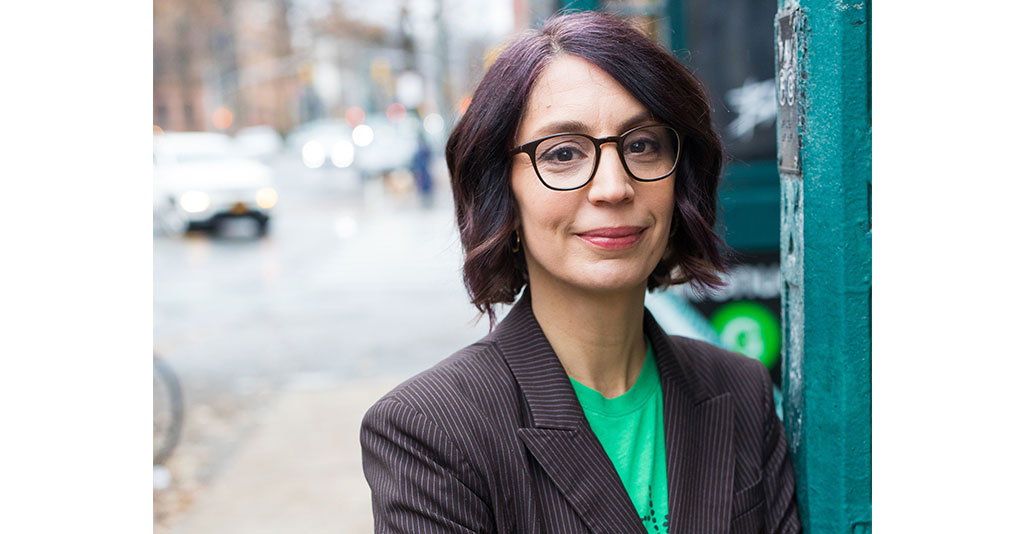Our March feature is Lisa Selin Davis, freelance writer for CNN, The New York Times, Romper and many others. She has been a writer for over 17 years from freelancing for major publications to writing Tomboy: The Surprising History and Future of Girls Who Dare to Be Different, her first non-fiction book published in August 2020. She’s also the author of two novels, BELLY and LOST STARS, and leads an interactive workshop for families and educators called WHO DECIDES WHAT’S NORMAL FOR BOYS AND GIRLS: On the history of childhood gender norms.
Provide a brief explanation of you job title along with a description of your duties.
I’m a full-time freelance writer, and I’m also working on my second non-fiction book, which is about the history of housewives and how that has led to the crisis mothers find themselves in today. Each day I’m working on a different article, for a variety of publications, and also tweaking my book proposal and the gender workshops I present. And I try to send at least one pitch a week to the publications I write for, or to new ones.
What stories, trends or issues are currently on your radar?
I’m always interested in parenting and women’s issues, and in general am interested in health, psychology, gender. But I’m also a generalist. I love writing about media, film and TV, and have a long history of writing about architecture, real estate and urban planning. I love writing cultural criticism, but I’m also just very interested in solutions to the various social and technological predicaments we find ourselves in right now.
What do you look for when you are researching writing an article?
What I love about this work is taking something that we accept as normal and finding out how it came to be that way. I notice a change in the way toys are marketed, or why there are all these pictures of boys in dresses in the early 1900s, and ask: What happened? I’m invested in interrupting our ideas of normal, and helping people understand where those ideas came from. Often I just make a pronouncement—”You know what makes me mad? Or: Did you ever notice… Or: How come…” and then the “it’s an article” lightbulb goes off. These are almost cousins of common lines from standup comedy, these moments of awakening when you realize, oh, there’s a story there.
How has COVID-19 impacted your work?
Like many mothers today, I am having to juggle helping my kids with school while trying to keep working, promote a book, market a workshop. It has been very hard, even as I know how lucky I’ve been. The precious commodity of time—especially alone time—is even rarer. But it has also made it harder to place stories that aren’t news-pegged. I think there’s more breathing room now that the media isn’t mostly occupied with covering the former president, but it’s still hard to talk about things that aren’t urgent. That said, I’ve really tried to figure out how to contribute more to the urgent conversations, to write more about race and inequality and to make sure I am promoting and sharing ideas that contribute to solutions and illuminate problems.
Please describe the most thrilling story you have written.
I think the most gratifying (if not thrilling) story I’ve written was about me and another Lisa S. Davis with the same birthday in Brooklyn. The story is about race and inequality and privilege and [in]justice and the two Brooklyns, but it’s also about the friendship that I developed with the woman I was confused with for 18 years. I’ve had pieces go viral, but often because they were controversial (whether I thought they would be or not) or because people felt the need to trash them, or me. This seemed to entertain and enlighten and make people think. The most gratifying thing I can hear is, “I hadn’t thought of it that way before.”
What story are you most proud of?
I’m proud of the stories I’ve done around the history of kids’ gender norms—on where we got the ideas of “boys’” and “girls’” toys, clothes, colors, activities and personality traits come from. There’s a good one in the Guardian and another on Medium’s GEN.
What tips do you have for PR professionals who need to pitch a story to you?
Often when I’ve written a story, people pitch something related to that exact story. I just did a story about kids’ mental health, and then I got about 15 pitches related to kids’ mental health, but my editor wouldn’t assign another, similar story. So it’s really about pitching something that’s different enough. It can be in the same general category but not so similar that my editor will just say no.
What do you enjoy most about being a writer?
I love getting paid to research, think, talk to interesting people, make connections in my brain—I love doing word games and puzzles, and to me putting together an article or book is related to that. It’s an amazing privilege to do this work and I hope I get to keep doing it!
When you are not writing, what are some of your hobbies?
During the pandemic, I’ve really tried to exercise and be outside as much as possible. My family took up ice skating, and I’ve been running and doing yoga and doing anything I can to be with other people, outside, moving around. I’ve been playing banjo and guitar since I was a teenager, and in the pre-parenting days I made a lot of art. Now my main hobby is complaining about how tired I am and how I used to have so many fun hobbies! And also obsessively playing the NYT Spelling Bee game. I’m addicted.
Follow Lisa on Twitter here.



